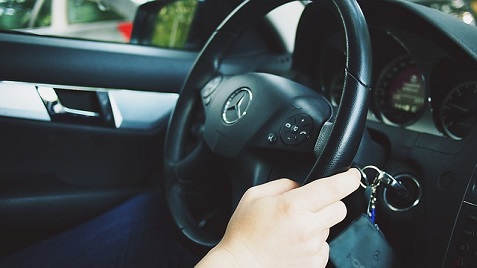Lessons Behind the Wheel: Key Things You Didn’t Learn in Driver’s Education Class

Even if you took Driver’s Ed, chances are they didn’t teach you everything you need to know to be a good driver. Here are some things you might have missed or never knew.
Human Beings Don’t Rise to the Occasion
Instead, we fall to the level of our own personal training or experience. Most drivers are pretty bad about signaling and following all the rules of the road. Sometimes, it’s pure laziness. Other times, it’s ignorance. Sometimes, it a bit of both. Whatever the cause, it can’t be the reason you get into a car accident.
Many people don’t realize the amazing capabilities of ABS. They won’t slam on their brakes because they don’t “trust” the system. Most drivers also aren’t comfortable pushing a vehicle to its limits. In an emergency situation, you need to. If you haven’t practiced full-on ABS stopping, you might smash into an easily-avoidable obstacle out there on the road. Practice hard braking in an empty parking lot or on a rarely used road at a slow speed.
A lot of drivers “tap the brakes,” which is useless with an ABS system. You need to stomp on them. First, stomp hard on the brake pedal. Pretend there’s a bug you want to crush or it’s going to crawl up your leg and eat you. Or, pretend there’s a photo of your nasty ex on the pedal. Whatever it takes.
Stay on the pedal, too. Do not tap it. Ignore the weird and crazy sounds coming from the ABS system. It’s normal. So are the pulsations. You’re not hurting the car. It’s actually helping the system do a better job of slowing you down.
If you fail to do this, you may end up in a car accident. Personal injury attorneys like Colley and Colley are usually the ones you would talk to after the fact. And, usually, it means you’re injured or you injured someone else. Not good.
Remain Calm
Do not overcorrect. A common cause of highway fatalities is a driver jerking the vehicle back to his or her lane after running partially on one side of the road. It’s common on rural two-lane roads. The thing is these accidents are completely avoidable. You don’t need to pull or yank the wheel to get control back over it. Usually, all you need is to pull normally and make a gentle turn and everything will be all right.
A vehicle’s left wheel offers sufficient traction and power in all but the rarest of circumstances, so don’t overdo it.
If your mind wanders while you drive and your passenger side wheels start to drift, stay calm. Ease off the accelerator and let the vehicle slow down a bit. Avoid the brakes unless there’s a reason to get off the road, pronto. And usually, the only good reason is that you’re about to hit something in front of you or you already hit something.
Practice correcting a swerve at about 20 mph if you want to get the hang of what it feels like. Do it on a deserted road or in a parking lot.
Use Thumb Hangers
You should use a wide grip on the wheel and keep your hands at “9 and 3” — an analogy to old analog clocks. If you don’t know what that means, look up analog clocks and you’ll know what it means instantly.
The reason we no longer use “10 and 2” is because of airbags. If you’re in a sudden crash, the airbag will deploy and fling your arms into your own face. You may hit yourself, knock out your teeth or otherwise injure yourself.
Train Yourself To React
Even a cautious and conscientious driver eventually faces an emergency situation. How you react could mean the difference between life and death. You can practice reacting by putting yourself in mock emergency situations. Don’t do this on busy public roads or in areas where there are other people around. Instead, do it on back roads where no one really drives or, even better, in an empty parking lot or an area where you can set up a few obstacles that “get in your way at the last second.”
Practice at a slow speed, like 10 to 20 miles per hour, to get the hang of it.
You can also train yourself to react to situations outside of the car, which is also a great way to build up your reflexes.
Brandon Phillips is a retired driving instructor. Always having been what could be called a petrol head, Brandon writes about all manner of auto related things, from sports cars, to learning to drive, to basic mechanics.
Related Posts
Posted in: Lifestyle
Tags: driving tips





